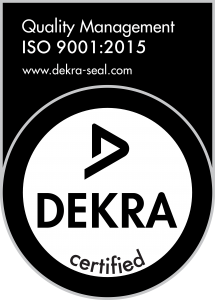860-829-2244
Jocelyn Arriola
@jocelynarriola
Profile
Registered: 6 months, 3 weeks ago
Key Steps to Performing a Successful KYC Risk Assessment
A KYC risk assessment helps organizations consider the risk levels of their purchasers and stop financial crimes resembling cash laundering, fraud, and terrorist financing. To conduct a profitable KYC risk assessment, companies should follow a strategic process that aligns with regulatory standards and inside policies.
Listed here are the key steps to performing a successful KYC risk assessment:
1. Understand Regulatory Requirements
Step one is to totally understand the regulatory requirements particular to your trade and jurisdiction. Compliance laws like the Anti-Cash Laundering (AML) directives, the USA PATRIOT Act, and Financial Action Task Force (FATF) guidelines provide the foundation for KYC procedures. Firms must stay up to date with evolving rules to make sure their KYC risk assessments remain efficient and compliant.
2. Gather Accurate Buyer Information
A robust KYC process begins with accurate and thorough buyer data collection. This contains:
Full legal name
Date of birth
Address and speak to information
Government-issued identification
Source of funds and income
For corporate clients, this may also embrace information concerning the firm’s ownership structure, beneficial owners, and business activities. Making certain data accuracy at this stage is essential for efficient risk evaluation.
3. Conduct Buyer Identification and Verification (CIP)
The Buyer Identification Program (CIP) is the process of verifying a shopper’s identity utilizing reliable, independent sources. This can involve document verification, facial recognition technology, and cross-checking with public records. Digital onboarding tools and eKYC options have streamlined this step, reducing the risk of human error and accelerating compliance.
4. Perform Customer Due Diligence (CDD)
Customer Due Diligence includes evaluating the potential risk a customer poses to your business. This process considers several factors, similar to:
Geographic location
Nature of the business or occupation
Financial habits and transaction patterns
Political publicity or connections
CDD helps determine the level of scrutiny required. Low-risk shoppers may undergo fundamental checks, while high-risk clients require Enhanced Due Diligence (EDD).
5. Assign a Risk Ranking
Primarily based on the findings from the due diligence process, assign a risk ranking to every client—typically categorized as low, medium, or high. This classification dictates the frequency and depth of ongoing monitoring. A systematic risk scoring model ensures consistency and transparency in decision-making.
6. Implement Enhanced Due Diligence (EDD) for High-Risk Shoppers
When purchasers are deemed high risk—attributable to factors like politically exposed standing (PEP), high transaction volumes, or ties to high-risk countries—Enhanced Due Diligence is essential. EDD includes a deeper investigation into the consumer’s monetary background, business relationships, and transactional history. Additional documentation and approval from senior management may be required to proceed the relationship.
7. Monitor and Assessment Transactions Continuously
KYC risk assessments are usually not a one-time process. Ongoing monitoring is critical to detect uncommon or suspicious activity. Use automated tools and AI-powered transaction monitoring systems to flag anomalies in real-time. This allows for quick action, minimizing potential damage and ensuring compliance.
8. Keep Records and Audit Trails
Keep complete records of all customer information, risk assessments, and due diligence findings. Regulators often require access to those documents during audits or investigations. A clear audit trail not only helps with compliance but in addition protects your group in case of legal scrutiny.
9. Train Employees Often
Even the most advanced KYC systems can fail if employees usually are not properly trained. Regular training sessions help your compliance team stay updated on the latest regulatory adjustments, inside policies, and fraud detection techniques. Encourage a culture of compliance throughout all departments.
Conclusion
A profitable KYC risk assessment is a multi-step process that requires precision, vigilance, and ongoing improvement. By following these key steps—understanding laws, verifying identities, conducting due diligence, assigning risk rankings, and continuously monitoring—you'll be able to build a resilient KYC framework. This not only keeps your corporation compliant but also builds trust with shoppers and stakeholders.
If you have any queries pertaining to exactly where and how to use kyc solutions company, you can get hold of us at our own page.
Website: https://kycmanagement.com
Forums
Topics Started: 0
Replies Created: 0
Forum Role: Participant

